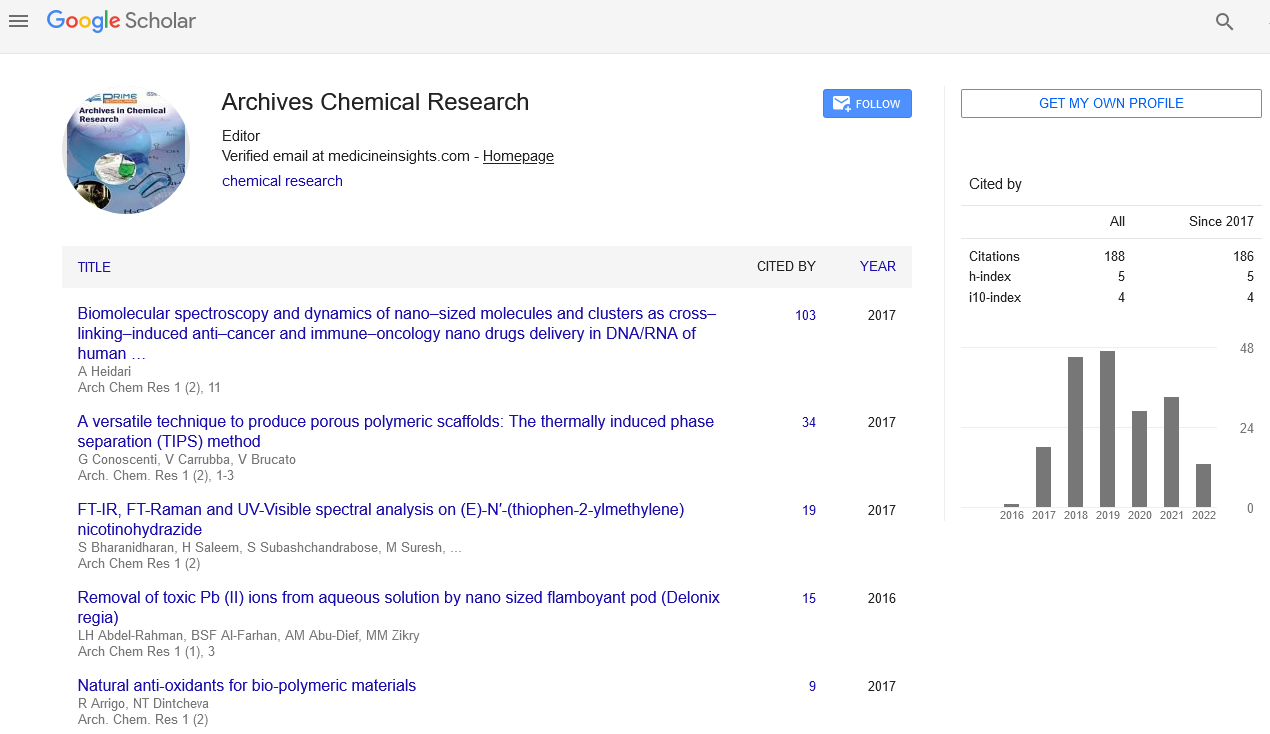Commentary - (2024) Volume 8, Issue 2
The Transformative Impact of Computational Chemistry on Modern Science
Ethan Turner*
Department of Organic Chemistry, Cumbria University, United Kingdom
*Correspondence:
Ethan Turner,
Department of Organic Chemistry, Cumbria University,
United Kingdom,
Email:
Received: 29-May-2024, Manuscript No. IPACRH-24-20306;
Editor assigned: 31-May-2024, Pre QC No. IPACRH-24-20306 (PQ);
Reviewed: 14-Jun-2024, QC No. IPACRH-24-20306;
Revised: 19-Jun-2024, Manuscript No. IPACRH-24-20306 (R);
Published:
26-Jun-2024, DOI: 10.35841/2572-4657.8.02.13
Description
Computational chemistry, an interdisciplinary branch that
merges the realms of chemistry and computer science, has
revolutionized the way scientists understand and manipulate
chemical systems. By using computer simulations and
theoretical models, researchers can explore the structures,
properties, and reactions of molecules with unprecedented
accuracy and efficiency. This field not only enhances our
fundamental knowledge of chemical processes but also drives
innovations across various industries, from pharmaceuticals to
materials science. At its core, computational chemistry relies on
the principles of quantum mechanics and classical mechanics to
simulate molecular behaviour. Quantum mechanics provides a
detailed framework for understanding the electronic structure
of atoms and molecules, while classical mechanics deals with
the motions of nuclei. By solving the Schrödinger equation,
computational chemists can predict the energy levels and
electronic distributions of molecules, although exact solutions
are often unattainable for complex systems. Therefore, various
approximations and numerical methods, such as Hartree-
Fock and Density Functional Theory (DFT), are employed
to make these calculations feasible. This method simulates
the physical movements of atoms and molecules over time,
providing insights into the dynamics of molecular systems. MD
is particularly useful in studying bimolecular processes, such
as protein folding and ligand binding. Techniques like Hartree-
Fock, DFT, and post-Hartree-Fock methods are used to calculate
electronic structures. These methods differ in their approach
to electron correlation, balancing accuracy and computational
cost. By using random sampling, these simulations can explore
the thermodynamic properties of systems. They are especially
useful in studying phase transitions and equilibrium properties.
Combining quantum mechanical and molecular mechanical
(QM/MM) methods allows for the study of large systems
where a small part (e.g., active site of an enzyme) requires
quantum mechanical treatment, while the rest is handled by
classical mechanics. One of the most impactful applications of
computational chemistry is in drug discovery and development.
Traditional drug discovery is a lengthy and expensive process,
often involving extensive trial-and-error experimentation.
Computational chemistry accelerates this process by enabling
the virtual screening of large libraries of compounds against
biological targets. Techniques such as molecular docking and
virtual screening allow researchers to predict how potential
drugs will interact with target proteins, thus identifying
promising candidates more efficiently. In materials science,
computational chemistry helps in designing new materials with
desired properties. By simulating the atomic-level interactions
within materials, scientists can predict characteristics such as
strength, conductivity, and reactivity before synthesizing the
materials in the lab. This approach is critical in developing
advanced materials for applications in energy storage,
electronics, and catalysis. Computational chemistry also plays a
crucial role in environmental science. It allows for the modelling
of complex chemical processes in the atmosphere, oceans, and
soil, helping scientists understand the impact of pollutants
and develop strategies for mitigation. For example, the study
of atmospheric reactions that lead to ozone depletion and the
formation of greenhouse gases relies heavily on computational
models. Despite its successes, computational chemistry faces
several challenges. The accuracy of simulations depends on the
quality of the models and the computational power available.
As such, there is a continuous push for the development of
more accurate algorithms and the utilization of advanced
computing resources, such as supercomputers and quantum
computers.
Acknowledgement
None.
Conflict Of Interest
The author’s declared that they have no conflict of interest.
Citation: Turner E (2024) The Transformative Impact of Computational Chemistry on Modern Science. Arch Chem Res. 8:13.
Copyright: © 2024 Turner E. This is an open-access article distributed under the terms of the Creative Commons Attribution License, which permits unrestricted use, distribution, and reproduction in any medium, provided the original author and source are credited.

